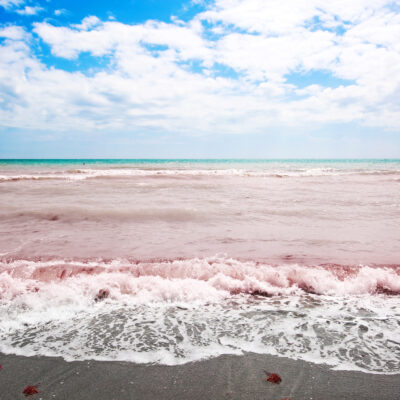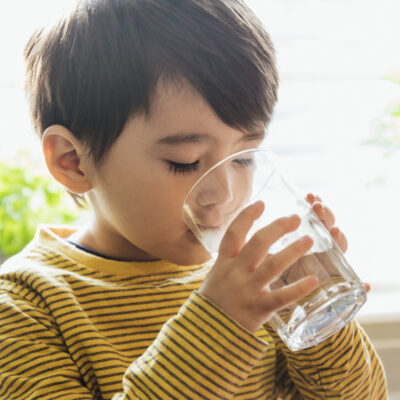LET’S MAKE SENSE OF YOUR WATER!
City of Tampa Water Quality Report
Population Served: 733,000
Recent Violations: 2
Primary Water Source(s): Hillsborough River & Floridian Aquifer
Report Year: 2023
Source: City of Tampa
DID YOU KNOW water quality reports, also known as “Consumer Confidence Reports (CCRs),” are annual documents that all public water systems are required to provide to you via mail and online. These reports are supposed to provide important information about the quality of the drinking water delivered over the previous year.
They can be difficult to read or understand. They are often many pages long and contain complex tables and charts. Culligan Water wants to change this and help you MAKE SENSE OF YOUR WATER.
This easy-to-read report will provide you with the following:
- Violations: Any federal, state, or local violations your water system has committed recently.
- Items of interest: Common water issues discussed within your community.
- Potential concerns: Unregulated contaminants that could be a health concern to you or your family.
- Water hardness: The current level of hard water in your area.
The Water Quality Report Legend:
- Health Concern Contaminants that have known health effects that the EPA regulates to protect public health.
- Aesthetic Issue Not necessarily a health risk but can affect your water’s appearance, taste, or odor.
- Unregulated Possible health risk but NO standards set by the EPA. Emerging chemicals and compounds the EPA is gathering data on.
Maximum Contaminant Level (MCL): The highest level of a contaminant that is allowed in drinking water.
Action Level (AL): The concentration of a contaminant that triggers additional action.
Max. Contaminant Level Goal (MCLG): The level of a contaminant in drinking water that doesn’t pose a significant risk to health. MCLG are NOT regulatory standards, and may not be attainable due to current remediation technologies.
A Summary Of The Tampa Water Quality Report
1) Infrastructure Improvements: Tampa’s water utility has undertaken several infrastructure improvements, including upgrading treatment facilities and distribution systems. They have implemented new technologies to enhance water quality monitoring and management. Future plans include expanding treatment capacity, upgrading pipelines, and implementing advanced treatment methods to address emerging contaminants. These efforts aim to improve water reliability and meet growing demand while ensuring compliance with safety standards.
2) Water Sources and Usage: Tampa’s primary water sources include the Hillsborough River, the Morris Bridge Wellfield, and the Tampa Bypass Canal. The Hillsborough River serves as the main source, supplemented by the other two during peak demand or drought conditions. The city manages these sources to maintain a sustainable supply, using advanced treatment processes to ensure water meets all health and safety standards. Conservation efforts and infrastructure improvements help optimize water usage and reduce waste.
3) PFAS: The report indicates that Tampa is monitoring Per- and Polyfluoroalkyl Substances (PFAS) as per EPA guidelines, which currently do not have a federally mandated limit. The city is proactively testing for PFAS and other emerging contaminants, following state and federal regulatory developments closely. They are prepared to implement additional measures if stricter regulations are introduced to ensure the safety and health of the public.
4) TDS and Organic Contamination Issues: The report acknowledges potential concerns such as occasional taste and odor issues due to natural organic materials.
Violations
Recent Violations in the Tampa Quality Report
Known violations in this water system have happened in the last five years. To learn more about the violations visit the source at the EPA Echo site.
TDS
AKA: Total Dissolved Solids
Year: 2023
Concerns: Aesthetic issues such as bad odor or taste
Removal: Reverse Osmosis Water Filters, Whole House Water Filters
Forever Chemicals
PFAS Contaminants In Tampa Tap Water
PFAS (per- and polyfluoroalkyl substances), commonly known as ‘Forever Chemicals,’ water contamination impacts residents in many places across the United States, including the Tampa Bay area. Florida’s most recent legislation against PFAS requires the Florida Department of Environmental Protection (DEP) to establish specific cleanup levels for PFAS in drinking water, groundwater, and soil by 2025.
On April 10, 2024, the United States government introduced its first-ever national, legally enforceable drinking water standard to protect citizens from PFAS forever chemicals. While this is a major development in the regulation of PFAS, there are over 12,000 types of PFAS, and only six types are being regulated by the EPA.
PFOS
Minimum Reporting Level: .004 µg/L
Concerns: Cancer
Removal: Reverse Osmosis Water Filters, Whole House Water Filters
PFPeA
Minimum Reporting Level: .003 µg/L
Concerns: Cancer
Removal: Reverse Osmosis Water Filters, Whole House Water Filters
PFBS
Minimum Reporting Level: .003 µg/L
Concerns: Cancer
Removal: Reverse Osmosis Water Filters, Whole House Water Filters
PFHxA
Minimum Reporting Level: .003 µg/L
Concerns: Cancer
Removal: Reverse Osmosis Water Filters, Whole House Water Filters
Hard Water
Hard Water Problems in Tampa
In 2022, the water quality report for Tampa reported the water hardness as 186 mg/L or 10.9 grains/gallon, classifying the water as hard. In just one year, the water in Tampa has gotten harder. In Tampa Water Department’s most recent water quality report from 2023, the average total hardness in the Tampa area is 201 mg/L or 11.7 grains/gallon.
Hard Water
Public Health Goal: N/A
Concerns: Dry skin/hair, scale, soap scum, mineral buildup in appliances
Removal: Water Softeners, Whole House Water Filters
Radioactive Contaminants
Explore Radioactive Contaminants Of Concern In Tampa
Radioactive contaminants can include substances like radium, uranium, and radon. These contaminants can enter water sources through natural deposits or as a result of human activities like mining.
AE/Uranium
EPA Max. Contaminant Level: 15
Max. Contaminant Level Goal: 0
Concerns: Cancer, Environmental Issues
Removal: Reverse Osmosis Water Filters, Whole House Water Filters
Radium
EPA Max. Contaminant Level: 5
Max. Contaminant Level Goal: 0
Concerns: Cancer, Environmental Issues
Removal: Reverse Osmosis Water Filters, Whole House Water Filters
Water Contaminants
Explore Common Contaminants In Tampa Tap Water
Common contaminants can come from natural sources, industrial discharges, agricultural runoff, or corrosion of plumbing systems.
TDS
EPA Max. Contaminant Level: 500 mg/L
Concerns: Aesthetic issues such as bad odor or taste
Removal: Reverse Osmosis Water Filters, Whole House Water Filters
Sodium
EPA Max Contaminant Level: 160
Concerns: Hypertension, kidney function and heart health problems
Removal: Reverse Osmosis Water Filters, Whole House Water Filters
Fluoride
Max. Contaminant Level Goal: 4
Concerns: Dental issues
Removal: Reverse Osmosis Water Filters, Whole House Water Filters
Disinfection Byproducts
Explore Disinfection Byproduct Contaminants In Tampa Tap Water
Disinfection byproducts (DBPs) are formed when disinfectants like chlorine react with natural organic matter in the water. Common DBPs include trihalomethanes (THMs) and haloacetic acids (HAAs). One thing to note is that while some states have public health goals around all of these contaminants, Florida does not. Therefore, there is no state-mandated goal for contaminants such as HAA5 or TTHM.
Bromate
EPA Max. Contaminant Level: 10
MCLG: 0
Concerns: Cancer
Removal: Water Softeners, Whole House Water Filters
Chlorine
EPA Max. Contaminant Level: 4
MCLG: 4
Concerns: Cancer
Removal: Water Softeners, Whole House Water Filters
HAA5
EPA Max. Contaminant Level: 60
MCLG: N/A
Concerns: Cancer
Removal: Water Softeners, Whole House Water Filters
TTHM
EPA Max. Contaminant Level: 80
MCLG: N/A
Concerns: Cancer
Removal: Water Softeners, Whole House Water Filters
For reference, a part per trillion (ppt) is roughly equivalent to a single drop of water in 20 Olympic-sized swimming pools or one second in 32,000 years. These updated interim Health Advisory Levels are below the detection capabilities of current laboratory testing technology. They serve as interim guidance until formal regulations or Maximum Contaminant Levels are established.







Facebook